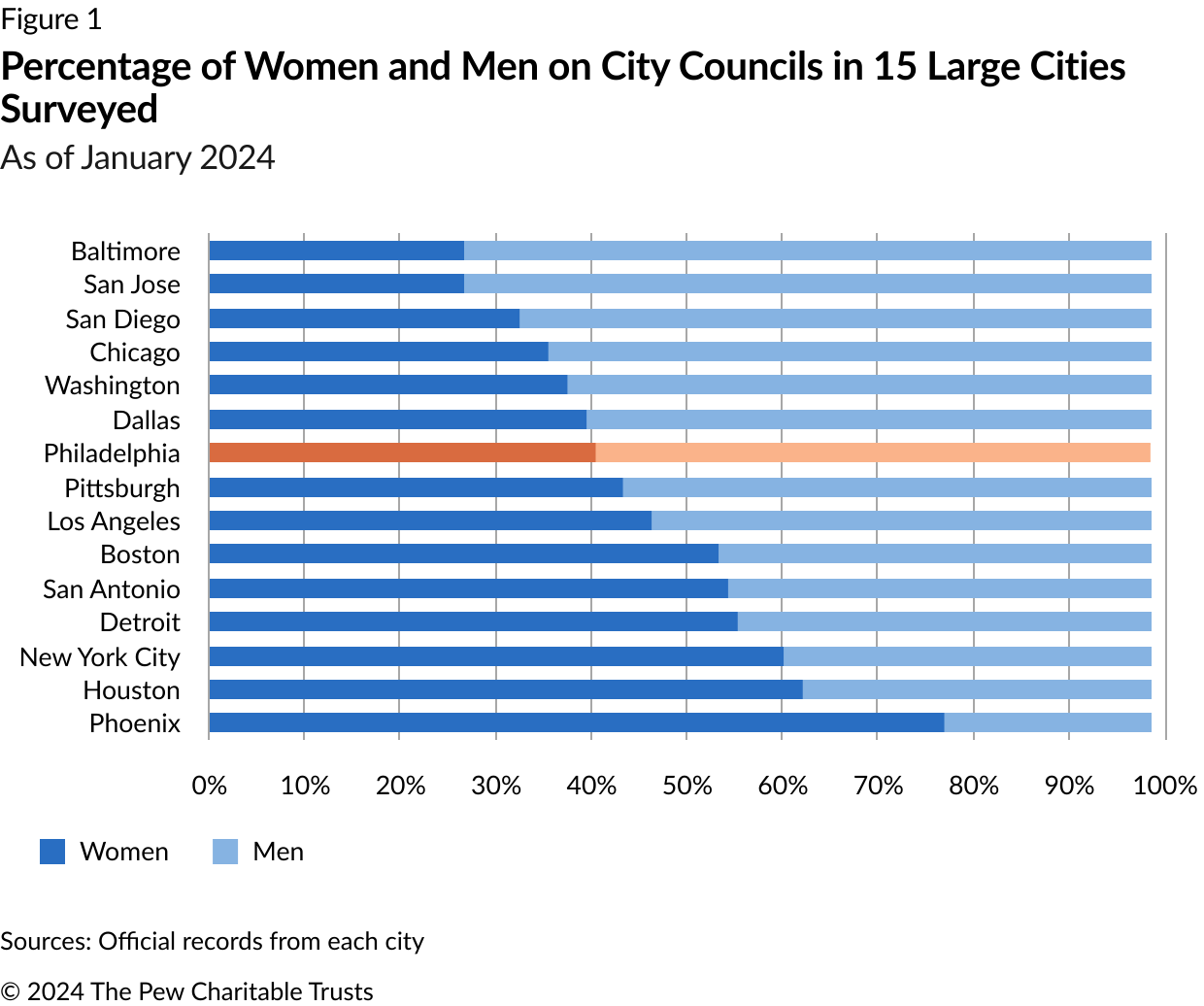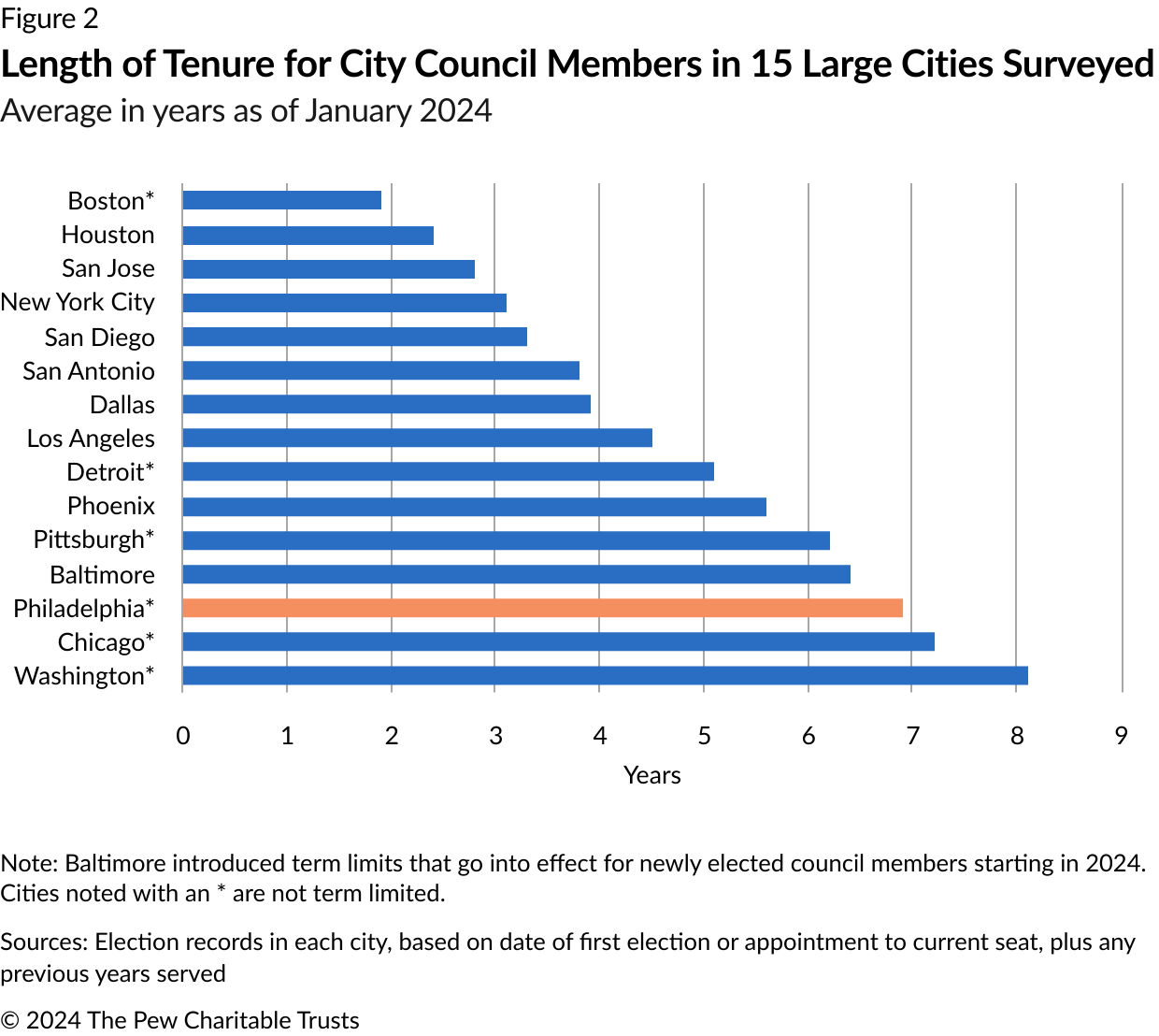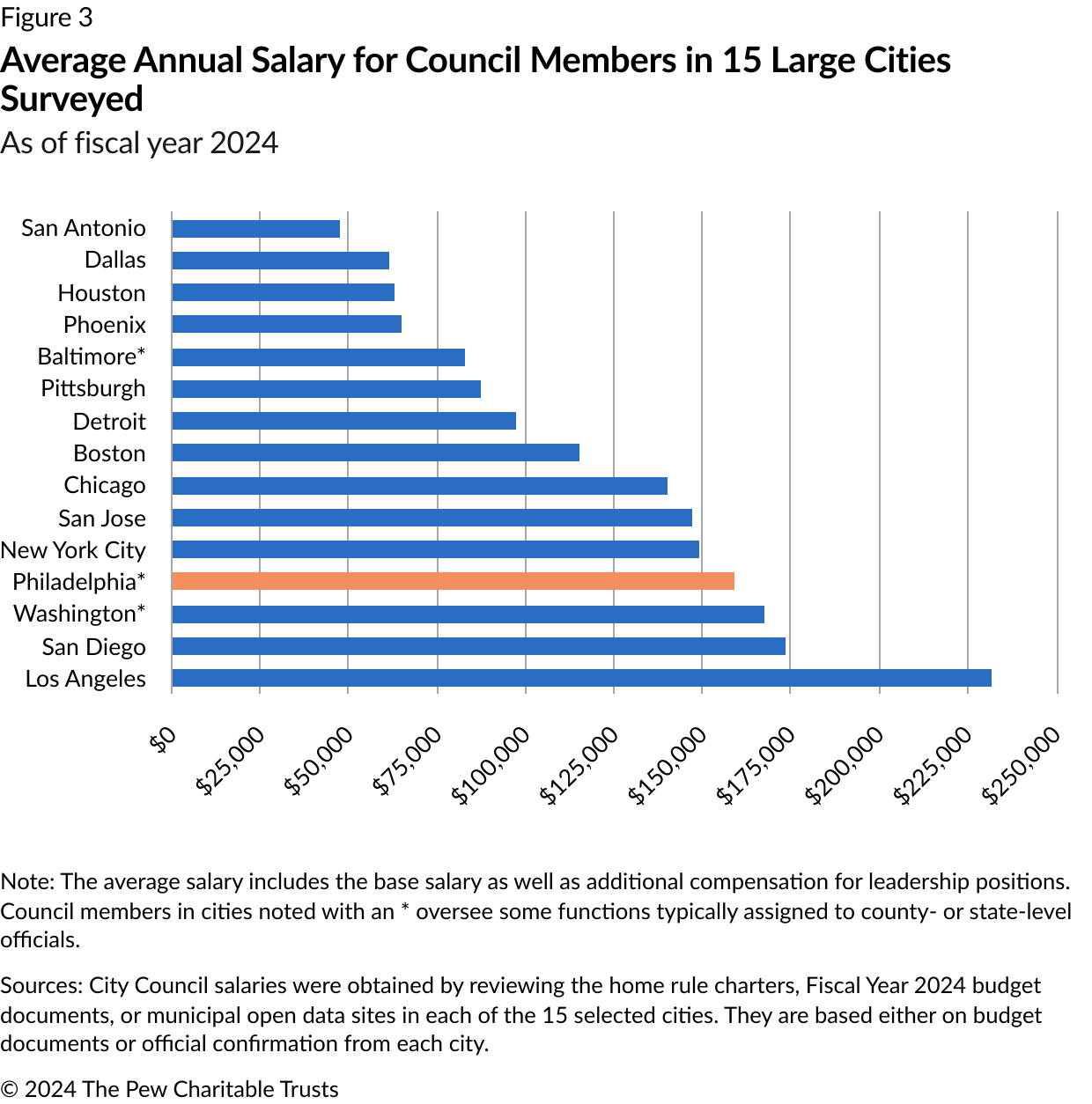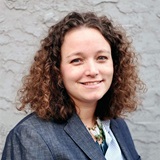More Women Serving on Philadelphia City Council, but Gains Lag Some Peer Cities
Among large cities surveyed, tenure among council members decreased by a year since 2016, while salaries increased by 27%
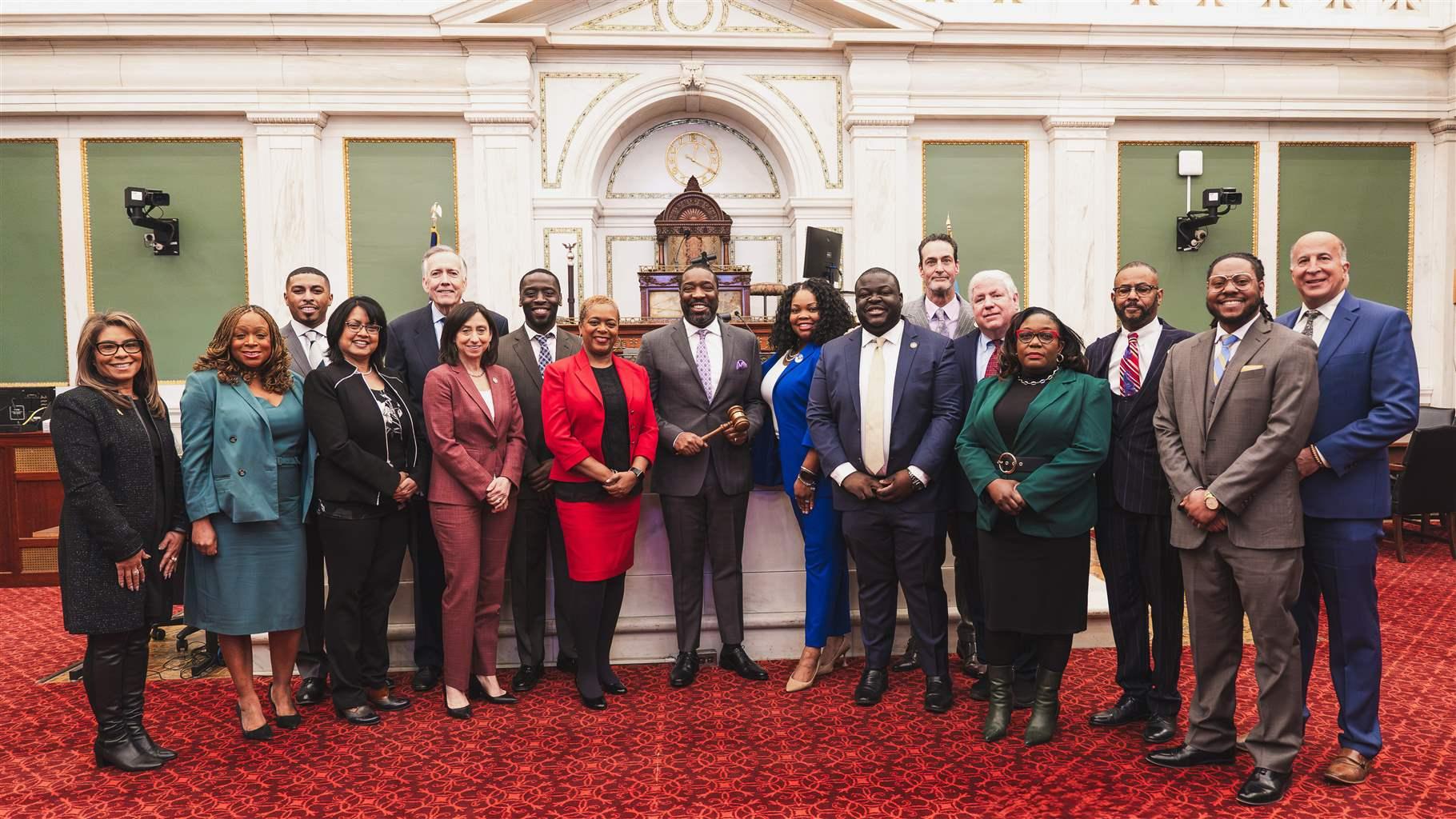
Although Philadelphia’s City Council makeup can change every four years following elections, the council experienced extraordinary turnover in 2024 because of retirements and multiple resignations during the previous term by members running for higher office. In addition, for the first time, the new council has members of the Working Families party holding both at-large seats reserved for the minority party.
The current council members are largely new to their positions. Nine of the 17 members (53%) have not yet served a full term. Philadelphia, similar to many of the other cities reviewed for this analysis, also experienced an increase in the number of women serving on the City Council, reduced overall tenure, and increased salaries for elected officials. The Pew Charitable Trusts last examined city councils in Philadelphia and 14 other U.S. cities in 2016.
One of the most significant changes since eight years earlier is the increased share of women serving on city councils. All but two of the comparison cities—San Diego and Washington, D.C.—boosted the number of women on their legislative bodies during this period. And as of 2024, six cities have majority female representation; none did in 2016. Phoenix has the highest percentage of female representation at 78%, while Baltimore has the lowest at 27%. There were no publicly identified nonbinary members serving on these councils.
Although Philadelphia grew its percentage of women from 35% to 41%, the city dropped in ranking from fifth to ninth as other cities—such as Houston and San Antonio—reported greater increases. Among the 15 city councils examined, the overall share of female representation on the local legislatures increased from 31% in 2016 to 47% in 2024. (See Figure 1.)
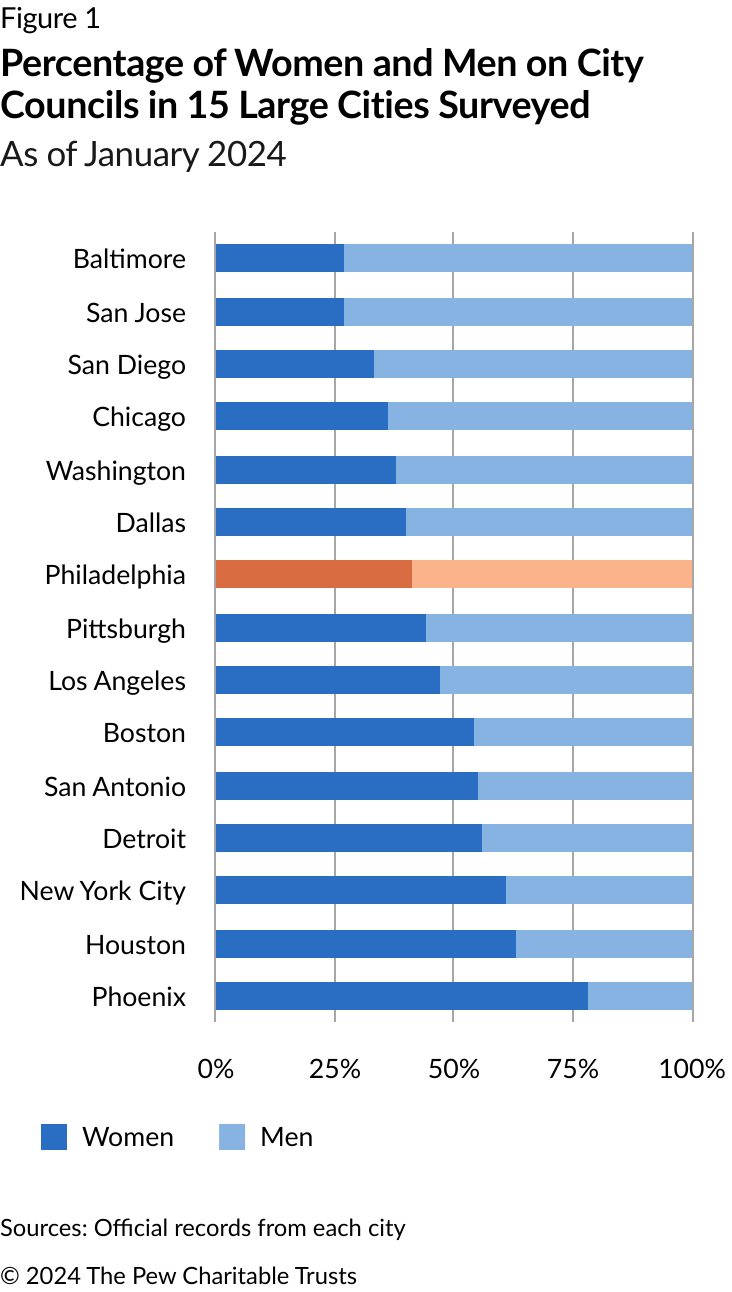
A look at average tenures
In 2024, the average tenure of Philadelphia’s 17 city council members—10 district and 7 at-large—is 6.9 years. That’s one of the longest among the comparison cities behind only Chicago and D.C. However, the average tenure length in each is heavily influenced by a few members with very long tenure, including Philadelphia Councilman Brian O’Neill, who has served more than 40 years.
Still, the average tenure is lower than in 2016, when it was 8.2 years. Overall, Philadelphia’s council members have longer tenures than those in many of the comparison cities, in part because the city has no term limits. Not surprisingly, that’s the case in all of the five cities with the longest average tenures. In 2022, Baltimore voters approved a charter change that introduced term limits for city council members. The rule goes into effect for new members elected in 2024. Among all of the cities examined, the average tenure is 4.7 years, down from 6.2 years in 2016. (See Figure 2.)
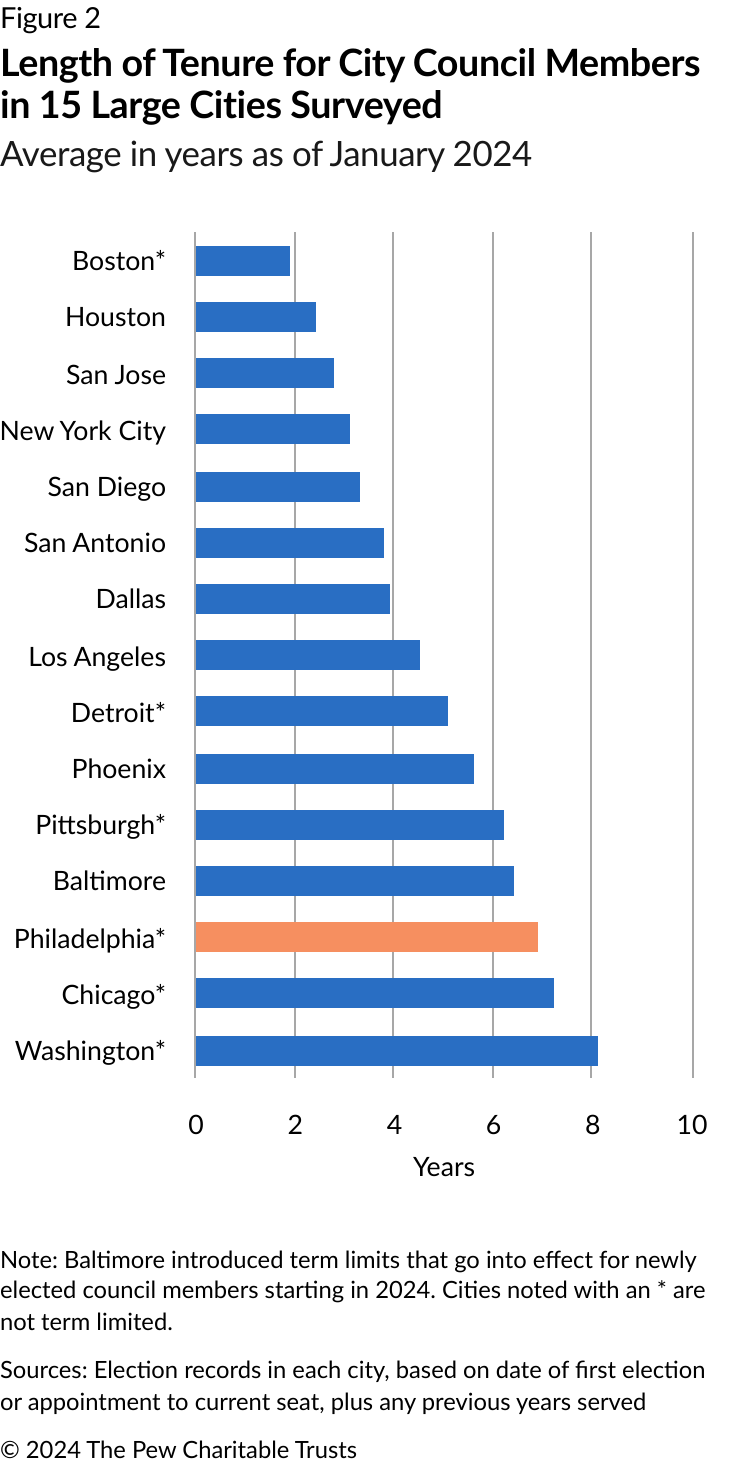
Philadelphia requires elected officials and staff to resign before running for any elected office other than re-election for their currently held seat. During the previous council term, six of the 17 members resigned to run for mayor, one retired at the end of the term, and one resigned following a conviction on federal corruption charges. This turnover contributed to the overall lower tenure on the current council.
Comparing council member salaries
In 2024, the average salary for Philadelphia city council members is $158,949 (including base salary as well as extra pay for leadership or committee assignments), the fourth highest among the comparison cities. As in 2016, Los Angeles has the highest average council member salary at $231,802 and San Antonio the lowest at $47,177. (See Figure 3.) However, this may not capture total annual compensation from all sources because some cities, including Philadelphia, permit outside employment for their council members.
Overall, average council salaries have increased by 27% since 2016. In Philadelphia, they have risen 20% in that period. The largest increases were in two California cities—San Diego and San Jose.
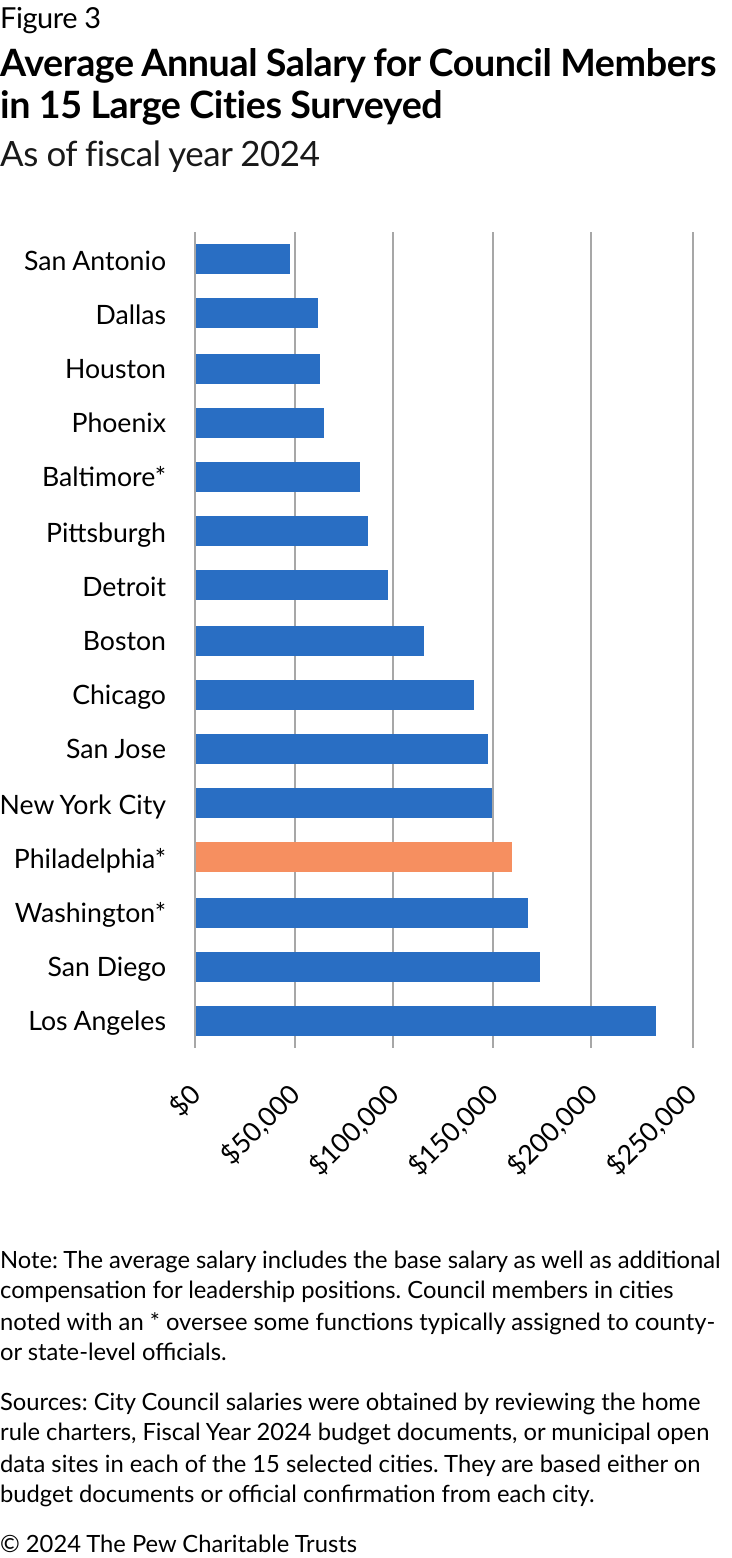
In conclusion, the 15 cities have nearly equal representation by male and female legislators for the first time in Pew’s recurring review of select city legislatures, albeit with significant variations among the cities. In addition, salaries increased by an average of 27% since 2016 while average tenure decreased by a full year. The changes recorded this year highlight a period of turnover and new leadership, not only in Philadelphia but across many large U.S. cities.
Katie Martin is a director and Alix Sullivan is an officer with The Pew Charitable Trusts’ Philadelphia research and policy initiative.


America’s Overdose Crisis
Sign up for our five-email course explaining the overdose crisis in America, the state of treatment access, and ways to improve care
Sign up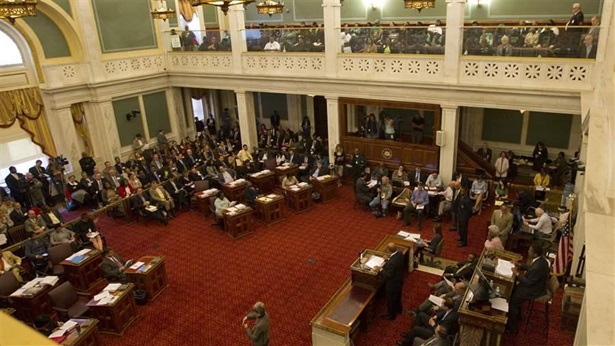
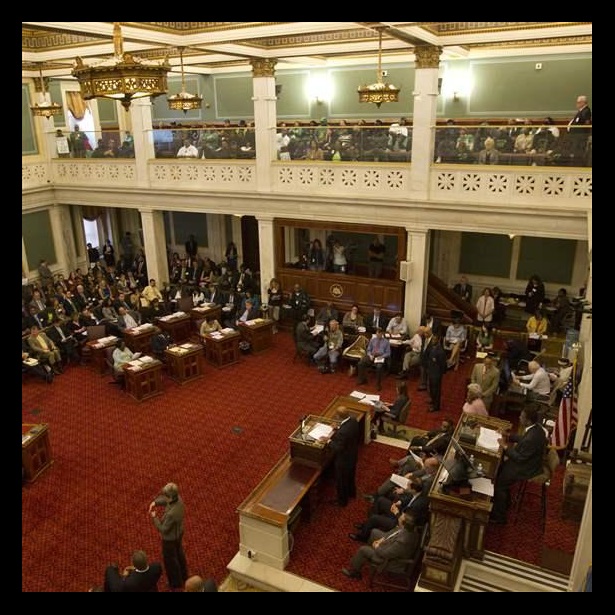
Share of Women Down on Philadelphia City Council


